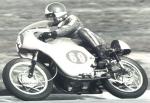Electronic Ignition - CB72, CB77, CP77, CL72, CL77 |
|
|
|
honda305 Forum | h305 Survey | h305 Marketplace | h305 Mailing List | h305 Auctions |
Electronic Ignition: FAQ
|
Vintage Racers | Motorcycles For Sale | Design | Featured Parts | NOS Parts | Classified Ads |
|
|
||||||||||||||||||||||||
| This FAQ (Frequently Asked Questions) section applies to the Electronic Ignition Systems for the 1959 to 1969 Honda 247cc and 305cc Twins. | ||||||||||||||||||||||||
|
|
||||||||||||||||||||||||
|
|
||||||||||||||||||||||||
| Q. | What is the Current Draw of the Power Module? |
|
||||||||||||||||||||||
|
|
||||||||||||||||||||||||
| Q. | Can I leave the ignition in the "on" position with the motor not running? If yes, for how long? | |||||||||||||||||||||||
|
|
||||||||||||||||||||||||
| Q. | I am running a Fixed Advance ignition setting on my racing 305 Honda Twin. Is this compatible with the Electronic Ignition System? | |||||||||||||||||||||||
|
|
||||||||||||||||||||||||
| Q. | Coils: Do I need to upgrade my stock coils if I am installing the Electronic Ignition? | |||||||||||||||||||||||
|
|
||||||||||||||||||||||||
| Q. | Coils: What is the power draw for the different available options? | |||||||||||||||||||||||
|
|
||||||||||||||||||||||||
| Q. | Air Flow: I am trying to find another location for the Control Module (my racing bike does not have the horn). What should I keep in mind in selecting a good location? | |||||||||||||||||||||||
|
|
||||||||||||||||||||||||
| Q. | I have a question this FAQ did not address. Where can I find more information? | |||||||||||||||||||||||
|
|
||||||||||||||||||||||||
|
|
||||||||||||||||||||||||
| Q. | What is the Current Draw of the Power Module? | |||||||||||||||||||||||
|
|
||||||||||||||||||||||||
| A. |
Current Draw: The ignition module itself only draws 20 milliamperes above the coil current, so its power draw is effectively negligible. The electronic system does have longer dwell than the points system, though, which increases the overall system current draw compared to the shorter dwell of a points-type setup - the upside being stronger spark at high revs, however, which is what makes it so useful for racing applications. |
|||||||||||||||||||||||
|
|
||||||||||||||||||||||||
| Q. | I am running a Fixed Advance ignition setting on my racing 305 Honda Twin. Is this compatible with the Electronic Ignition System? | |||||||||||||||||||||||
|
|
||||||||||||||||||||||||
| A. |
Yes. Fixed advance is not a problem for the electronic system - since it is attached directly to the existing points cam and uses the stock advancer; the absence of advance in a fixed application would apply equally to the solid-state ignition. In other words, whatever settings in timing advance (or lack thereof) you need on the stock points-based system, will remain possible with the Electronic Ignition System. |
|||||||||||||||||||||||
|
|
||||||||||||||||||||||||
| Q. | Coils: Do I need to upgrade my stock coils if I am installing the Electronic Ignition upgrade? | |||||||||||||||||||||||
|
|
||||||||||||||||||||||||
| A. | No, you do
not need to upgrade the stock Honda coils. In fact, you might be
very surprised with just how much performance you can get from the
stock units. Don't forget: with the Electronic Ignition, the
condensers are eliminated from the circuit. This frees up a
significantly meaningful amount of additional current which the
coils previously did not have. This, combined with the added
precision of the firing, gives a very robust performance.
If you are trying to decide between either the aftermarket coils or the Electronic Ignition upgrade, the latter should be your first choice. If, however, you feel the need for even more coil power, see the next question. |
|||||||||||||||||||||||
|
|
||||||||||||||||||||||||
| Q. | Coils: What is the power draw for the different available options? | |||||||||||||||||||||||
|
|
||||||||||||||||||||||||
| A. |
Here are the Power Draw specs on three
different sets of coils:
|
|||||||||||||||||||||||
|
|
||||||||||||||||||||||||
| Q. | Air Flow: I am trying to find another location for the Control Module (my racing bike does not have the horn). What should I keep in mind in selecting a good location? | |||||||||||||||||||||||
|
|
||||||||||||||||||||||||
| A. | On the airflow issue, the answer is partially dependent on coil resistance, since the control box heating is a function of the resistance of the transistors (which doesn't vary) and the square of the average current. Put another way, if the average coil current goes up by 40%, the power dissipation in the little black box goes up about double (1.4 times 1.4 is about equal to 2, if you follow what I mean). Anyhow, with stock coils or similar 4.5-ohm aftermarket coils, no sweat in any environment, so long as the control box is not enclosed in yet another sealed box. At the other extreme, with those low-resistance Nology coils, there's quite a bit more heating, and the additional airflow becomes of bigger benefit. In no case, however, does the heat sink need direct 45 mile an hour wind right on it; it just needs to be where the air is not completely static. Inside the seat cowl is probably too close to the latter (static-air) case, while under the seat base would probably be just fine, if it's like most of my bikes. | |||||||||||||||||||||||
|
|
||||||||||||||||||||||||
| Q. | I have a question this FAQ did not address. Where can I find more information? | |||||||||||||||||||||||
|
|
||||||||||||||||||||||||
| A. | Please send me your questions and comments by eMail. | |||||||||||||||||||||||
|
h305: Forum |
|||
| CB-77 | CYP-77 | Road Test | Riding Log | Literature | Zen | Marketplace | VJ Survey | Links | Home | |||
